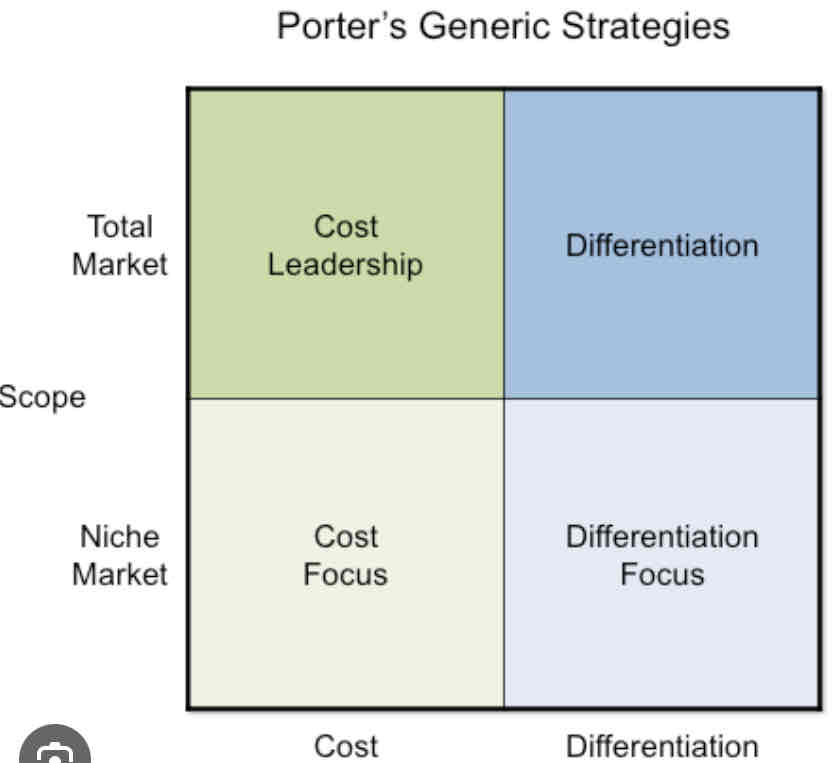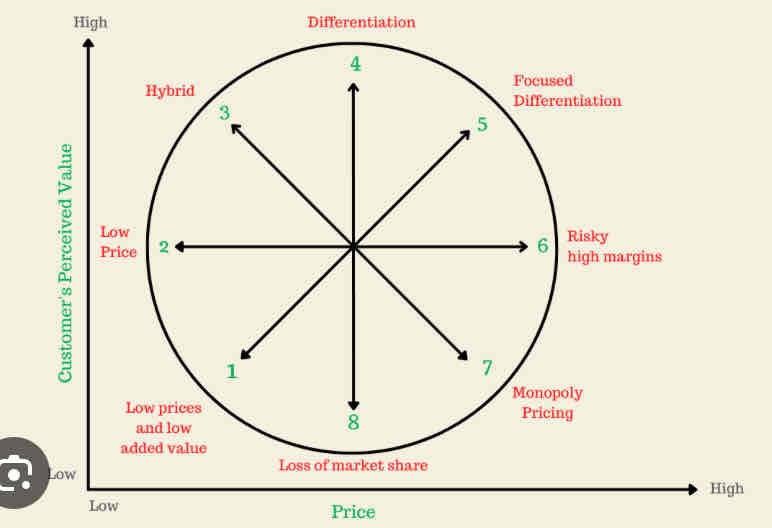8.2 strategic positioning
1/17
There's no tags or description
Looks like no tags are added yet.
Name | Mastery | Learn | Test | Matching | Spaced |
|---|
No study sessions yet.
18 Terms
The porters model is
A strategic tool to help decide on how to compete, this tool offers 4 strategies depending on choises made on
Point on difference, which market to operate in
Porters generic strategies model suggests that a business shoudl
Follow one of three positioning strategies in order to compete within its market essentially bsuinesses will compete either on:
Price ( cost leadership )
Uniqueness or value percieved by the customer ( differentiation )
Or by focuing on a niech or vey specific type of customer
Porters generic strategy looks like

Cost leadership strategy requires
A focus on cost minimisation
Large scale volume
Economies of scale
Differentiation leadership strategy requires
Strong usp
Focus on innovation
High profit margins
Developing brand loyalty
Not being the cheapest or not offering strong differentiaion means
being stuck in the middle and likely to fail
Influences on the choise of strategic position
Competitors, how strong are the competitors a business faces in its chosen strategic position, what advantages, if any, do those competitors face
External environment, careful and regualr scanning of changes in the extenal environment is key to effective strategic positioning
Core comepetancy, and honest view about the ability of the bsuienss to compete is essential,
The bowmans model is a
strategic tool to help decide how how to compete, this tool offeres 8 strategies.
Teh clock suggests
Price and percieved value

Position 1
Low price and low percieved value,
Generic product, usually inferiour product , very low profit margins, this strategy relied on high sales volume and economies of scales,
Position 2
Low price,
Cost leaderhship position
Low profit margins
Some percieved value
This strategy also relies on high sales valume and economies of scale
Position 3
Hybrid
Some differentiation, appear to offer good balance between price and value, attracting aspirationsl customers but still price conscious
Position 4
Differentiation
Strong usp and differentiation, brand name, featurs, quality, customer service, delivery time, ped is less sensitive
Position 5
focussed differentiation
Specialist niche market
Very strong usp or differentiation
Premium prices
High profit margins
Position 6
Risky high margins
Often new and high tech products attracting early adopters, uses skimming prices strategy, this strategy requies focus on innovation
Position 7
Monoply pricing
Premium prices for low value, unsustainable strategy unless in a monoply position, success of this strategy may depend on the power fo regulation
Position 8
Loss of market share
Appears to be overpriced for products or services that are similar to what other businesse provide, and an unsusatinable strategy
Strategy 6,7 and 8
Are likely to fail as they are seen as unfair by the customers